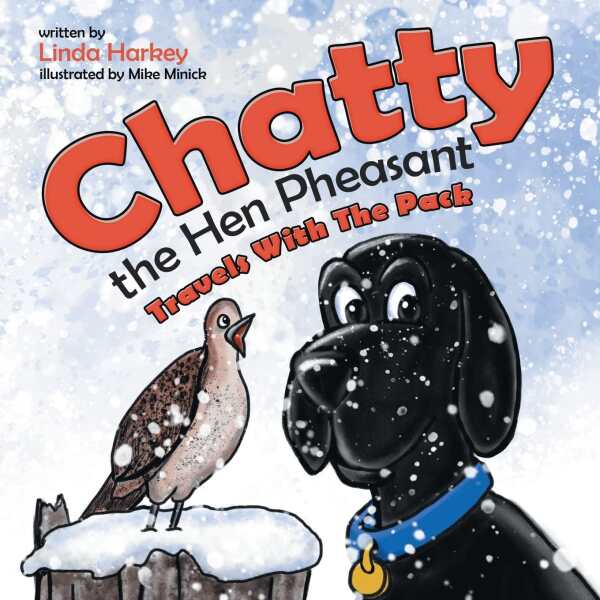Chatty the Hen Pheasant
Travels with the Pack
A hunting dog and his would-be prey have comical interactions in the picture book Chatty the Hen Pheasant.
In Linda Harkey’s surprising picture book Chatty the Hen Pheasant, a dog braves the snow to hunt for a bird, hoping to please his owner.
Living in South Dakota, Nassau is a black Labrador who only wants to make his person happy. The two are out on a hunt when a heavy snow drift kicks up; Nassau and his person are separated. In the middle of the storm, Nassau decides that finding a pheasant anyway, and gifting it to his person, will result in the human’s joy—and maybe some rawhide chews for himself.
Thus Nassau sets about sniffing out a pheasant—an animal that, he notes, smells like chicken nuggets. He meets wet, vocal Chatty at the end of his trail. Once captured, Chatty asks Nassau questions, insults him, and complains; the dog wishes he could shut the bird up. Love for his person leads him to persevere, though.
Both animals are portrayed with humor. Nassau is slavish about his devotion to his person; he likens Chatty to “a lump of wet mud” in his mouth, and he dreams about what delights his expedition will earn him. At his opposite, Chatty is an indignant, amusing lead—angry about the dog’s smell, his slobber, and his general rudeness.
But in the end, both characterizations, which are used to drive the story forward, are unresolved elements; these charming characters fade so that the book can center an elsewhere unsupported message about preserving pheasant hens and the future of the species. It’s a message that’s disassociated from Chatty and Nassau’s adventure altogether, leading to confusion. The illustrations are more successful about connecting the central characters with their audience: the two animals try to eyeball each other—she from his mouth, and he over his snout—in an added funny element to the tale.
A hunting dog and his would-be prey have comical interactions in the picture book Chatty the Hen Pheasant.
Reviewed by
Camille-Yvette Welsch
Disclosure: This article is not an endorsement, but a review. The publisher of this book provided free copies of the book and paid a small fee to have their book reviewed by a professional reviewer. Foreword Reviews and Clarion Reviews make no guarantee that the publisher will receive a positive review. Foreword Magazine, Inc. is disclosing this in accordance with the Federal Trade Commission’s 16 CFR, Part 255.

